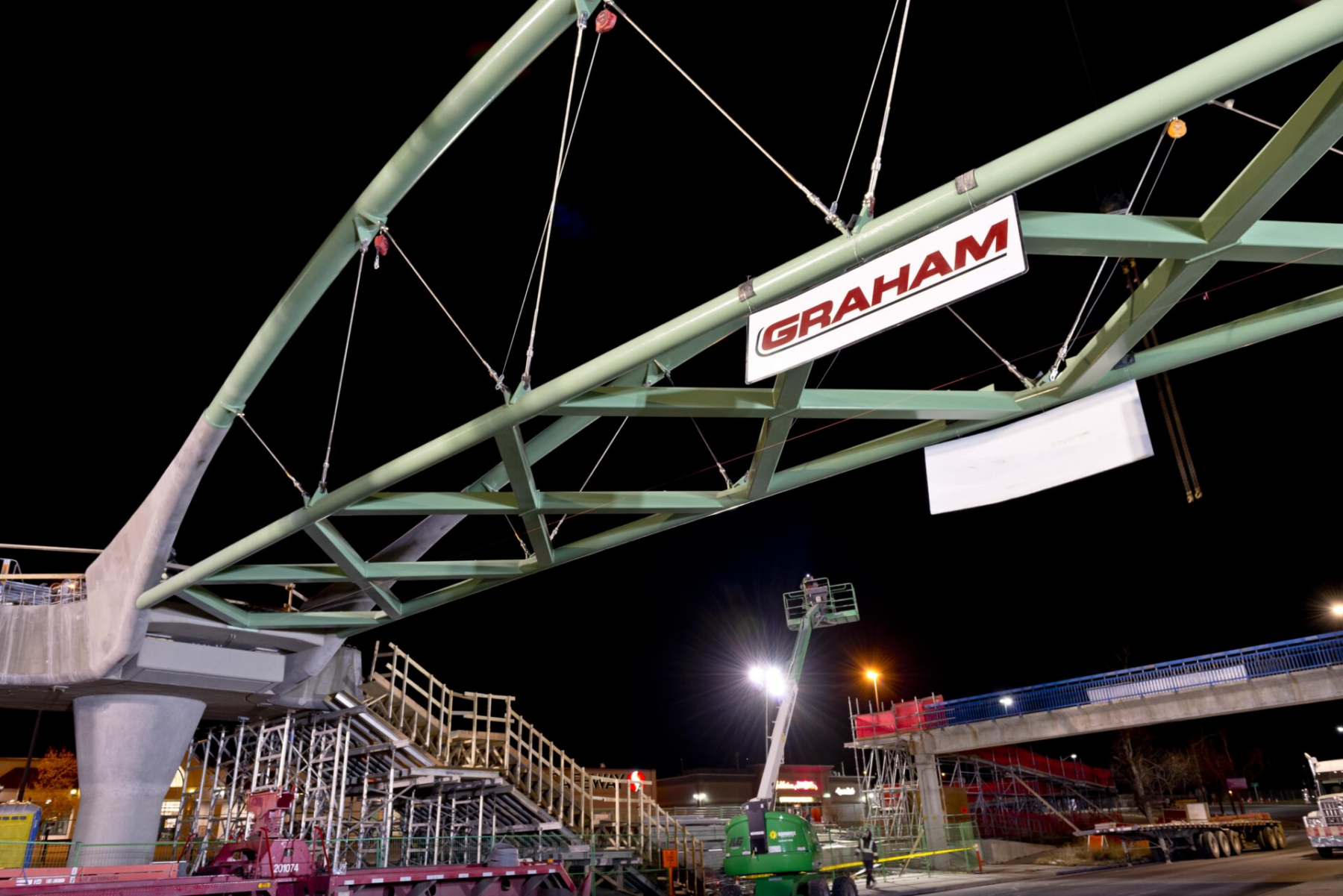Tech overhaul: Inside Graham’s digital transformation
The project will set the company up to take advantage of emerging technology.

Crews work at a Metro Vancouver water treatment plant. – Graham Construction
One of Canada’s largest general contractors is on a mission to harness the power of data.
Graham Construction has embarked on a journey to create a new data platform aimed at transforming data into an enterprise-level asset that will improve the company’s efficiency and deliver better outcomes for project owners.
Data is rising in the construction sector
Annette Cooper, director of data and analytics in Graham’s IT and enterprise applications department, is part of the team leading the project. She explained that like many other industries, construction is becoming digitized.
“I think construction is no different from any other industry,” she said. “As society becomes more digitized, more data is available. The thing I always say is that data is the byproduct of a business process. So the more we digitize our business processes, the more data we have to track them. There’s just more and more data available in construction.”
The internet of things (IOT) combined with technology like sensors, trackers etc. is adding to the amount of construction data in addition to some of the more traditional data sources. Although Cooper noted that some of these new technologies are not as common as people might think. And often the implementation is in patches.
“It’s one of those things where if you can harness the opportunity you can do a lot, but it can be very complicated to get some of those things on site and working properly,” she said.
Cooper noted that even if you get these data gathering systems in place, putting that data to work can also be a challenge. The new data platform is being designed to draw in and combine data from disparate systems. The eventual goal is to get up the “analytics maturity curve” to the point where predictive and other kinds of insights can be gleaned.
Finding structure in the unstructured
“There was this notion roughly ten years ago that data was this new gold or oil that everyone was going to ride,” said Cooper. “And everyone was going to use machine learning models and the whole business would be automated and predictive. But where society is at now, we have created a bunch of digital swamps that we have to figure out how to clean up and make useful.”
While the amount of data being generated in construction is growing, there are only pockets of the industry where it is being utilized to a high degree.
One of the keys to achieving this often has more to do with support and buy-in from leadership than figuring out the details of the technology itself.

“Do we know the decision we are trying to make or the action we are trying to drive from this data and are we actually going to make the decision? Are you at a level of organizational maturity where you are actually going to let that data really inform that decision? I actually think that’s the thing that more often gets in the way than the technical stuff,” said Cooper.
In Graham’s case, its project began after the company saw it was running behind and didn’t have a formal strategy for what it was doing with its data.
“We wanted to think about where Graham is going to be in five years and what that data profile will look like,” said Cooper. “We were managing mostly numeric data – ones and zeros – but it hadn’t occurred to anyone what to do with unstructured data.”
Unstructured data in construction includes things like plans, pictures, bids or anything else that can’t be easily retrieved and utilized by some tools and systems.
“To leap to new technology we had to be able to make room for the unstructured data and its potential down the road,” said Cooper. “Basically we have created a new cloud data platform which utilizes much more modern technology suites to get data out of source systems.
Cooper explained that Graham has been growing by mergers and acquisitions, and every time you bring a new company in, they have their own systems for finance, project management and other aspects of the business. Often, these systems are not fully compatible with each other.
“Our answer is to pull that data out and put it somewhere else,” she said. “This was an opportunity because Graham didn’t have a lot of this stuff already in the works, it didn’t have to go through the process of decommissioning a bunch of old stuff. We were able to just leap to the new technology.”
Improving those data ‘muscles’
Graham’s experience building its own project management system in the past gave the team the confidence to combine several tools to meet its needs, including Databricks and Azure Data Factory.
“It’s this idea that you don’t have to buy one tool that you pretend is going to do everything. Graham is open to this notion of making sure you are using the right tool for the right job.”
“It’s like this new muscle Graham is trying to build and we will just be building that muscle forever.”
The first step in the process was assessing what Graham was trying to do with its data and where it was in terms of data management maturity. The first year of the project was also spent being very careful about choosing which technology to use.
“Cloud sounds really good but it can also be incredibly expensive if you aren’t careful about how you are managing your computing,” said Cooper. “So it’s putting things through paces, doing proof of concept with different kinds of technology to understand their ingestion. They all say they can do it but they don’t all do it or do it nicely.”
But what about artificial intelligence, machine learning and these other technologies grabbing headlines recently?
Cooper explained that she sees a lot of consultants out there selling machine learning and artificial intelligence. But the core problem facing many construction companies is essentially a boring one: finding the data, cleaning up the data and putting it somewhere it can be used. That is the work that must be done before some of these emerging technologies can be used.
“You can’t magically sprinkle machine learning onto something and then all the sudden it is working,” said Cooper.
There is potential for things like AI and machine learning to predict the success of a project plan before shovels are even in the ground.
“Those are the kinds of things we want to get into, but in order to do that you have to have your data in order,” said Cooper. “You have to have enough, the right kind and stored in a way that machines can be trained on it. There are the hopes and dreams of things like AI and then there is the reality of where the technology is at.”
But before things like machine learning or AI, one of the biggest benefits the team wants to realize is simply making information available much more quickly to the people who are making decisions. As Graham has grown massively in the past decade, get information up the chain has become more and more complex.
“Often, problems take much longer to surface because they just can’t get up the chain quick enough,” said Cooper. “Just being able to have those things escalated and get productivity increases means that we’re delivering faster to owners, we’re safer, less going back and fixing things. I think that is the first challenge for this.”
Cooper noted that while there is a lot of speculation about how technology and data could impact the construction process, at the end of the day it’s people who build projects.
“Does this completely change how the construction industry does what it does?” she said. “No. I think that at the end of the day you still have people wielding hammers and pouring concrete. What we want to do is optimize by matching the project that’s coming up with the right team of people, making sure we have the right levels of supervision and how do we do all that in a much faster way.”

